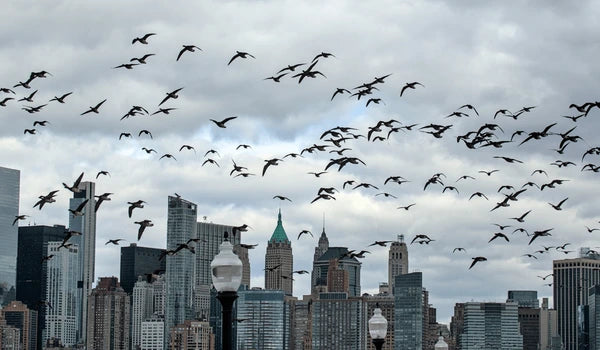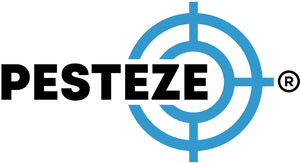PREVENT BIRDS FROM GETTING STUCK IN BUILDINGS WITH SIMPLE, HUMANE SOLUTIONS!

PREVENT BIRDS FROM GETTING STUCK IN BUILDINGS WITH SIMPLE, HUMANE SOLUTIONS!
SUMMARY
Birds can often become trapped inside buildings, causing stress for both the birds and building occupants. This guide offers six humane and effective methods to deter birds from entering buildings and prevent them from getting stuck inside.
FEATURES
- Seal Entry Points: Block gaps and openings in walls, vents, and roofs to prevent birds from entering.
- Install Bird Netting: Place netting over vulnerable areas like roofs and vents to keep birds out.
- Use Decoy Predators: Place lifelike models of owls or hawks near entry points to scare birds away.
- Apply Bird Deterrent Gel: Create an uncomfortable surface on ledges and eaves to stop birds from landing.
- Install Motion-Activated Devices: Use lights or sound-emitting devices to scare birds away from building entrances.
- Cover Windows with Decals: Use window clings or decals to prevent birds from flying into transparent glass.
GUIDE DESCRIPTION
Birds getting stuck in buildings can be distressing for both the birds and the building occupants. Birds often find their way into buildings through small openings, such as vents, windows, or roof gaps. Once inside, they can become trapped, causing damage and panic. Luckily, there are several humane ways to deter birds from entering buildings and getting stuck.
One of the most effective solutions is to seal entry points. Birds can enter buildings through small openings, so it’s essential to check for gaps in walls, roofs, and vents. Sealing these openings with caulking, mesh, or other materials will prevent birds from finding their way inside. Be sure to cover any small holes, cracks, or open areas around windows and doors as well.
For larger areas, consider installing bird netting. This fine mesh material can be placed over roofs, vents, or other entry points to prevent birds from accessing these areas. Bird netting is ideal for larger structures, such as warehouses or attics, and is an effective and humane way to keep birds out without harming them.
Another effective deterrent is to place decoy predators near common bird entry points. Lifelike models of owls or hawks can be used to scare birds away, as birds instinctively avoid areas where they sense predators. Decoy predators should be placed in visible locations and moved occasionally to maintain their effectiveness.
To prevent birds from perching on ledges, eaves, or window sills, you can apply bird deterrent gel. This sticky, non-toxic gel creates an uncomfortable surface that discourages birds from landing. The gel is invisible to humans and does not harm the birds, but it deters them from resting in areas where they may get stuck or trapped.
If birds are frequent visitors to your building’s entry points, motion-activated devices may be a suitable solution. These devices emit sounds or lights when they detect movement, scaring birds away before they can enter the building. Motion-activated lights or ultrasonic devices are particularly useful for larger entrances or areas that birds frequent during migration.
Finally, it’s essential to prevent birds from flying into transparent glass windows, which can lead to injury or entrapment. You can do this by applying window decals or clings to make the glass more visible. Birds often mistake clear windows for open space, so adding decals helps them recognize the barrier, preventing accidental collisions.
By implementing these humane strategies, you can effectively deter birds from entering your building and getting stuck inside. These methods not only protect the birds from harm but also help maintain the cleanliness and safety of your property.
- Maanas Mehta


Comments 0